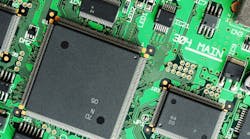Embedded solutions are found in an increasingly broad range of applications these days, and industry insiders say the sky may be the limit. Suppliers serving the embedded space credit the versatility of today’s hardware solutions, a wider variety of distributor services, and advancing technology in general as key reasons for the sector’s growth. And they don’t see it slowing down anytime soon.
“It’s a really exciting time for the embedded space,” says Kelly Gillilan, product marketing manager for AMD Embedded Solutions, which makes central processing units (CPUs), graphics processing units (GPUs) and accelerated processing units (APUs)for embedded systems, specializing in high-performance, low-power solutions. “If you think of everything we’re connecting to… and how everything is becoming much more accessible from a variety of devices, either in our personal lives or at work, embedded fills every category you can imagine.”
Today, embedded solutions—systems designed for a specific task or application—are used in everything from medical imaging and monitoring equipment to consumer electronics and casino gaming machines as designers focus on differentiating their software and getting their products to market even faster. Suppliers are answering the call to help customers meet these goals, providing access to better, more versatile products from a wider range of manufacturers and combining them with value-added services such as design assistance and a higher level of technical support.
“Customers are engaging more at the board level,” says Chuck Kostalnick, senior vice president for Avnet Embedded, a division of Avnet Electronics Marketing. “This has been happening for some time, but now it really feels like we have the wind at our backs. [Customers are working at the] true embedded platform level more than ever before.”
Kostalnick refers to the greater availability of standard embedded products—server motherboards, as one example—which allow customers to leverage existing technologies and focus their energies instead on the software that runs their application.
“Our customers have gotten extremely sophisticated in how they’ve adapted their software applications,” adds Kostalnick. “They are perfectly optimized for their application, so from a hardware standpoint it’s not as critical. They can tweak the application software to fit the hardware.”
These advances are creating a steady stream of business for both embedded manufacturers and distributors as they seek to meet the needs of a growing number of customers from a broadening array of industries. Suppliers particularly have their eyes on medical markets, the gaming industry, and digital signage.
The Drive To Do More
Gillilan notes power, cost, size, and longevity as key issues for embedded designers, using the medical market as a key example. Medical imaging customers are seeking solutions that offer higher-end computing power while makers of monitoring and diagnostic equipment, especially portable solutions, are seeking systems that draw less power and provide longer battery life. Companies such as AMD are challenged to provide a variety of solutions to meet those needs. Gillilan cites AMD’s APUsas technologies that can improve efficiency and reduce power consumption.
Also, Gillilan points to digital signage and the growing number of applications for embedded technology in that space. Today’s higher-end processors can be used to drive multiple displays in a single system, he says, indicating applications such as casino gaming, point-of-sale systems, interactive kiosks, and even industrial automation and control as places where designers may want to incorporate more display screens for the user. Surveillance systems are another growth area.
“Just walking to and from work, you probably get your picture taken 50 times or so,” he says. “With those cameras, there has to be a system crunching the data and processing the information. This is another instance where we see an increasing trend for embedded solutions.”
Kostalnick agrees, noting the growing number of end markets that are using security surveillance equipment today.
“These systems are now being installed and implemented in fast food places, resale stores, banks,” he says. “The industry has been around a long time, but it’s moved up the technology curve.”
From a supplier’s perspective, those systems marry well with a customer’s digital signage requirements, as food, hospitality, entertainment, and other, similar customers require both types of systems.
“Really, it’s about providing a true, end-to-end solution for customers going down the digital signage path,” Kostalnick explains. “We provide them with the displays and the embedded brains of the system, then you couple that with the security surveillance part. This is definitely an area where we can add a tremendous amount of value.”
Looking ahead, Gillilan and Kostalnick say such trends will only accelerate.
“I think you’re going to see a lot more interesting applications coming out of the embedded marketplace,” adds Gillilan.








